Vasco’s journey as a painter began with a small, bright green and yellow sketchbook his mother bought him when he was six years old in Mexico. “She had a passing promise,” he recalls. “’I’ll buy it for you if you use every page.’ At the time I didn’t think I was going to do it, but I ended up keeping the promise ever since.” That early encouragement became the seed for a lifelong dedication to art, one that would evolve far beyond childhood doodles. From Chiapas, Mexico, to Los Angeles, Vasco has carved a path that intertwines memory, heritage, and the immigrant experience into a vivid, deeply personal body of work.
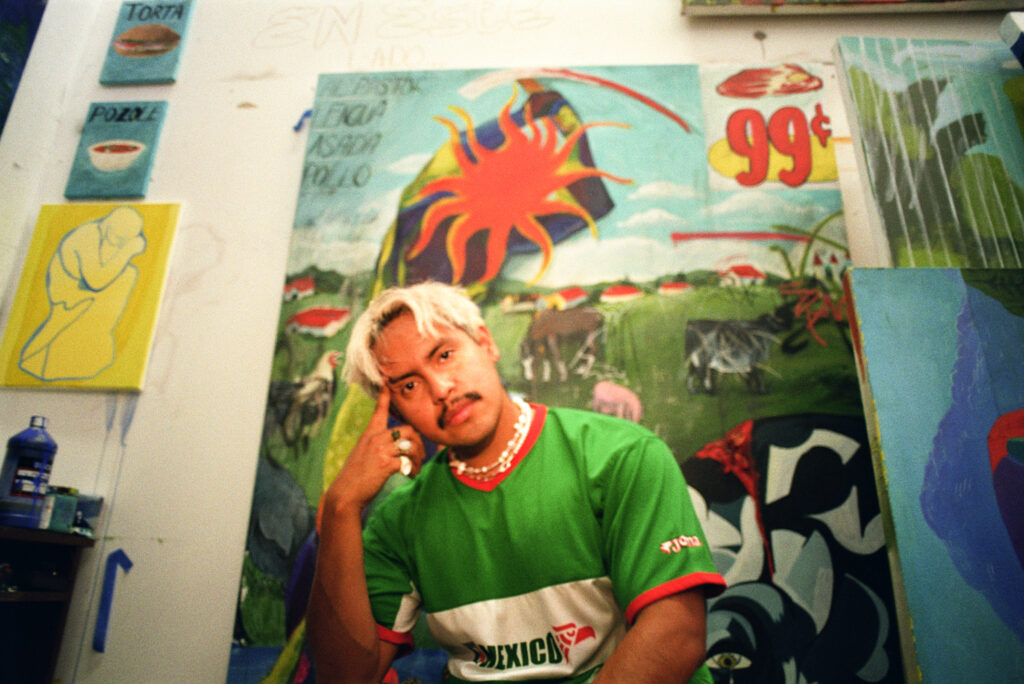
“I feel like the reason why I still keep going is that there are so many things in my life that have pressured me into this life,” he says. For Vasco, painting is not just a creative pursuit—it’s a way to mythologize the immigrant experience, a voice for stories that are too often silenced. “As an immigrant, I can’t have a normal job. If I do, it has to be something like washing dishes or building houses—things that don’t pay well,” he explains. But for Vasco, the privilege to paint has allowed him to confront these challenges head-on and turn them into something meaningful. “I feel very privileged that not only do I have the time, the gift, but also the support to make the work that I do.”
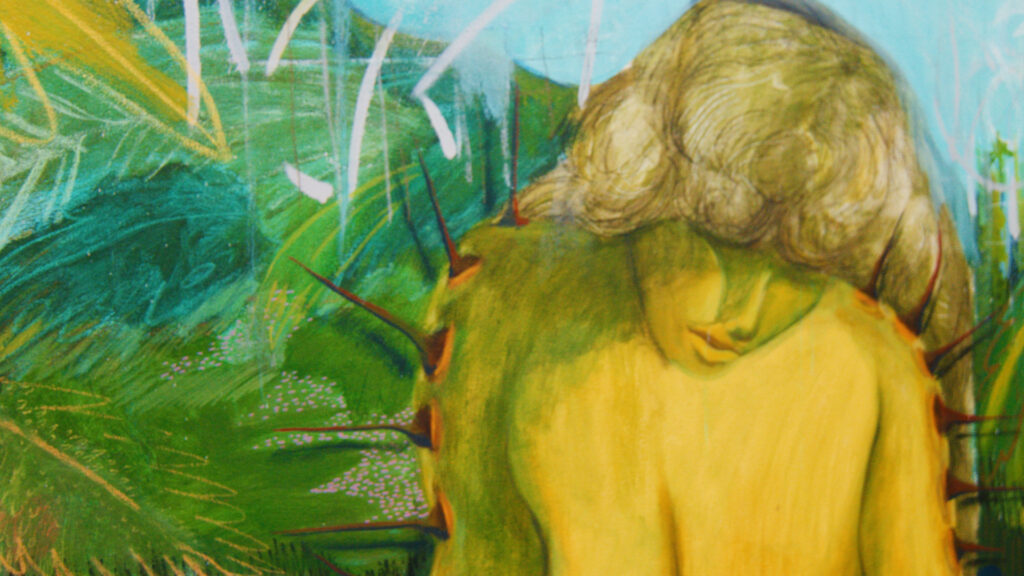
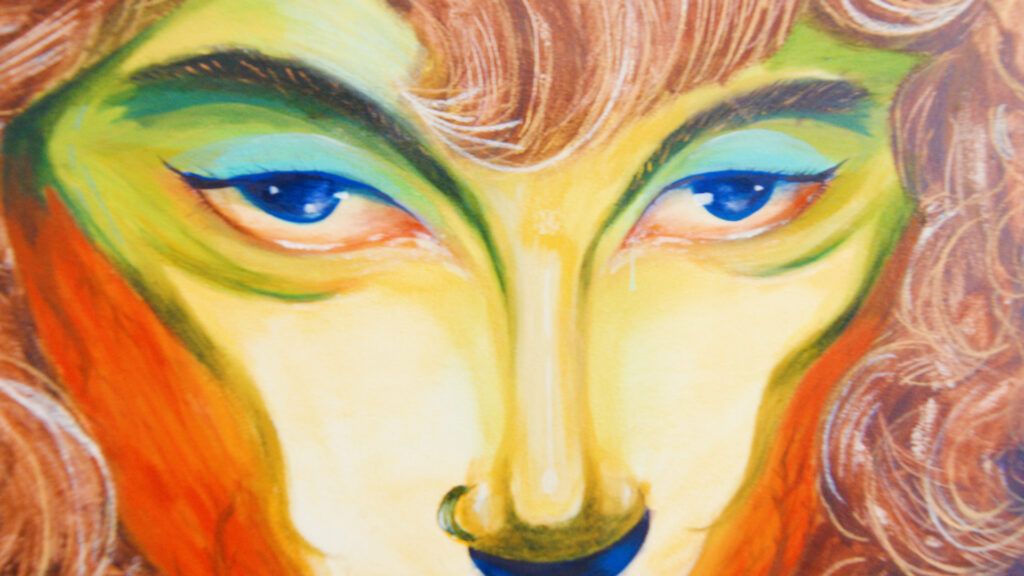
Vasco’s paintings are rooted in memory, but memory in his work is not fixed or linear—it stretches, stains, and becomes mythologized in the mind. “Memory is the thing that keeps us alive, especially after we’re long gone,” he reflects. In his current series, the artist seeks to romanticize and document the era in which he lives. “I feel like artists are creatures that document the present, honor the past, and somehow predict the future,” he says. “For me, the purpose right now is to mythologize this era, to romanticize it while I’m still alive, so that when people find this work in a couple decades, they can look back and be like, ‘Hey, this guy captured the essence of his time and almost made a mythology out of it.’”
Much of Vasco’s work emerges from the intersection of personal grief, emotion, and the natural world. “This is the first painting I’ve done that didn’t come from memory,” he notes, describing a piece inspired by his response to ICE raids in Los Angeles. “I remember getting in my car and literally drifting into the highway to escape them. That happened. And in the middle of that, I was also going through a heartbreak and family grief, all condensed in a week or two.” The painting became a way to process overwhelming emotions, with the volcano—a recurring symbol in his work—embodying the release and intensity of those feelings. “I thought maybe the volcano was me. Maybe it’s my subconscious telling me, ‘You have a lot to release.’”
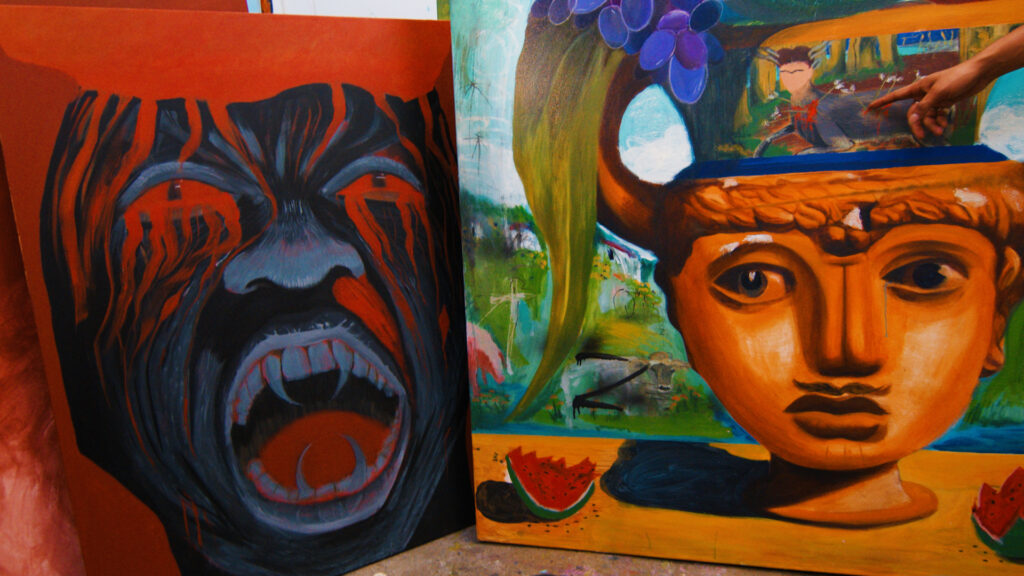
Vasco draws inspiration not only from his present circumstances but also from the legacy of artists who came before him. “Sometimes, when I’m tuned in here at 2 a.m., the only thing I hear is the train, and I still feel the presence of these other artists who’ve had their time,” he says. “They’re maybe curious and cheering me on because now I’m alive and taking a shot at the ring.” This connection to a lineage of creators reinforces the dual nature of his practice. Both personal exploration and a contribution to a broader artistic narrative. “I think the goal is just to get to know myself,” Vasco reflects. “I probably would be, you know, batshit crazy if I wasn’t painting. It’s like my therapy as well.”
The immersive life of the studio has been crucial to his practice. Vasco lived in his studio for ten months while preparing for his LA solo exhibition. “You live in a room with your work. You have no distractions. You’re alone. It’s freezing cold during winters and crazy hot during summers. You eat, sleep, and paint in the same place. You don’t have access to a shower—you shower once every three to four days. At night, you hear nothing since the studio is away from the city. Every day you see your friends, family, and partner living their lives on their Instagram stories. You feel alone, isolated. Makes you wonder if your art is good enough. You ask, ‘What even is good? Why do you make art? Will it be worth it? What if it doesn’t work out?’ Then your heart breaks. But one day, you get a call. A gallery wants to represent you. They offer you a solo exhibition. Suddenly, you realize it was worth it.”
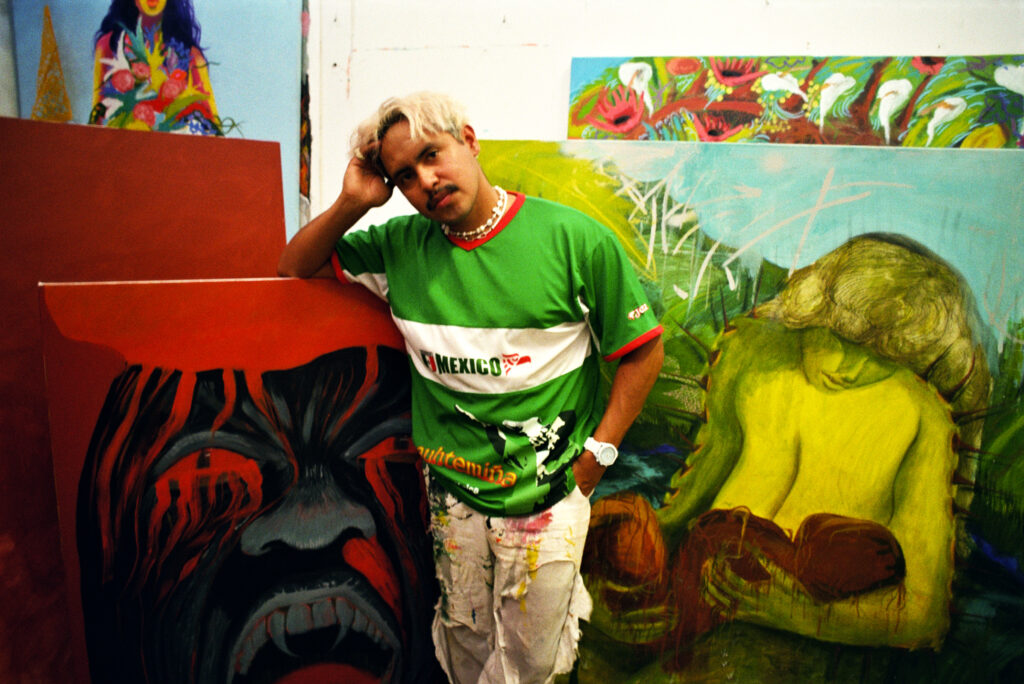
Vasco’s exhibition exemplifies this balance of personal experience and universal resonance. “I usually just choose the emotion, which in this case was rage and sadness and grief, and just go from there,” he explains. The works act as a chronicle of lived experience, blending private memory with the collective consciousness of a community navigating grief and resilience.
The technical aspects of Vasco’s work also speak to his heritage and values. Many of his recent pieces incorporate natural pigments derived from minerals, a nod to his indigenous roots. “It gives it an extra sort of nod to my background,” he explains. “Indigenous people have been persecuted since the 1500s, at least in Mexico. So that’s also a conversation about what role the materials play with the emotions and the time.” Each piece becomes a vessel for history, memory, and identity, connecting his personal experience to broader cultural and social narratives.
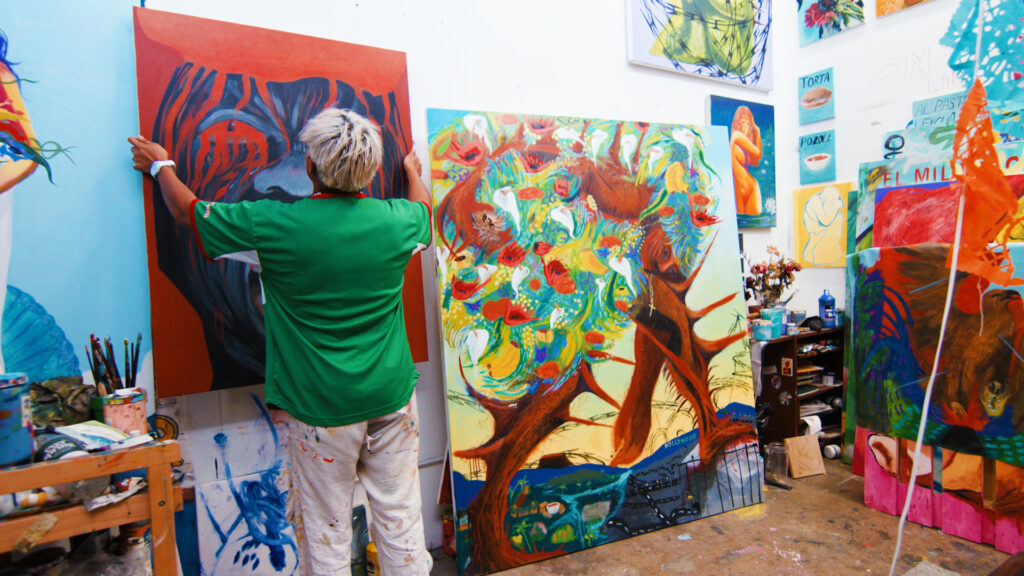
Beyond the themes of memory and heritage, Vasco’s work engages with the present in a way that is immediate and tangible. “Right now, playing it safe would just be not painting and staying at home. But I tried that for three weeks, and I was a mess. My heart was telling me that I needed to be here regardless of the risk it proposes,” he says. In doing so, his art becomes both a refuge and a declaration—a refusal to hide, a refusal to be silent. “I’m so sick and tired of being told to downplay our emotions, to downplay our presence. If anything, now is the time to say fuck that,” he asserts.
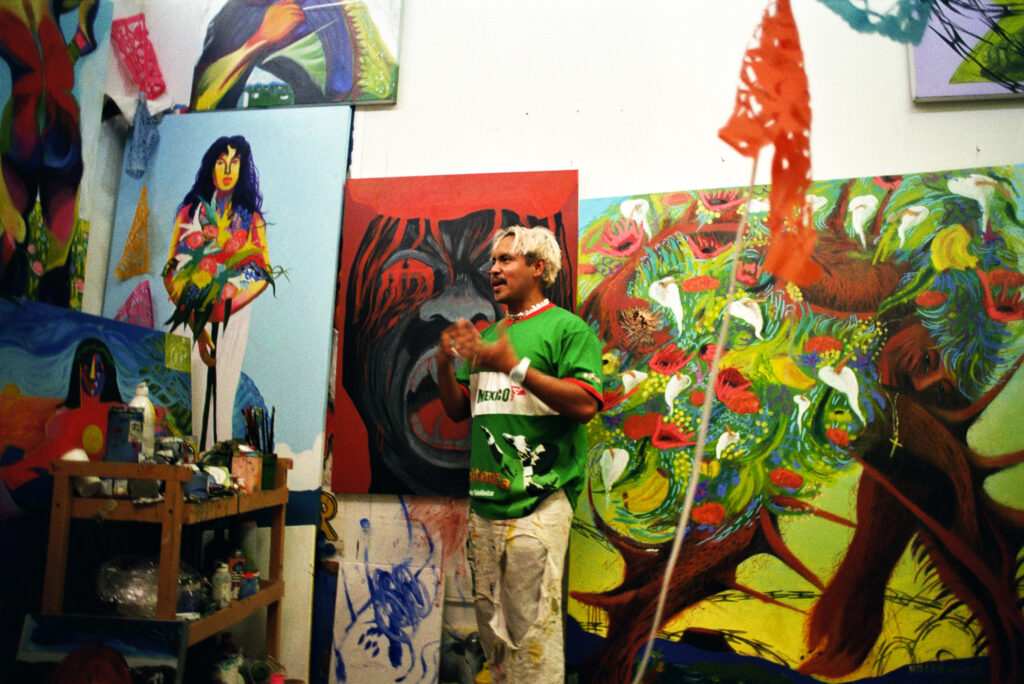
Vasco’s paintings are a cultural testimony. “I feel a responsibility as a painter to document and to speak about the things a lot of us are afraid to either speak out loud or maybe we just never really have the words to say,” he says. Each brushstroke becomes an act of remembrance and a celebration of survival. Vasco transforms the intricacies of his life into works that speak to the broader immigrant experience while remaining deeply rooted in his own story.
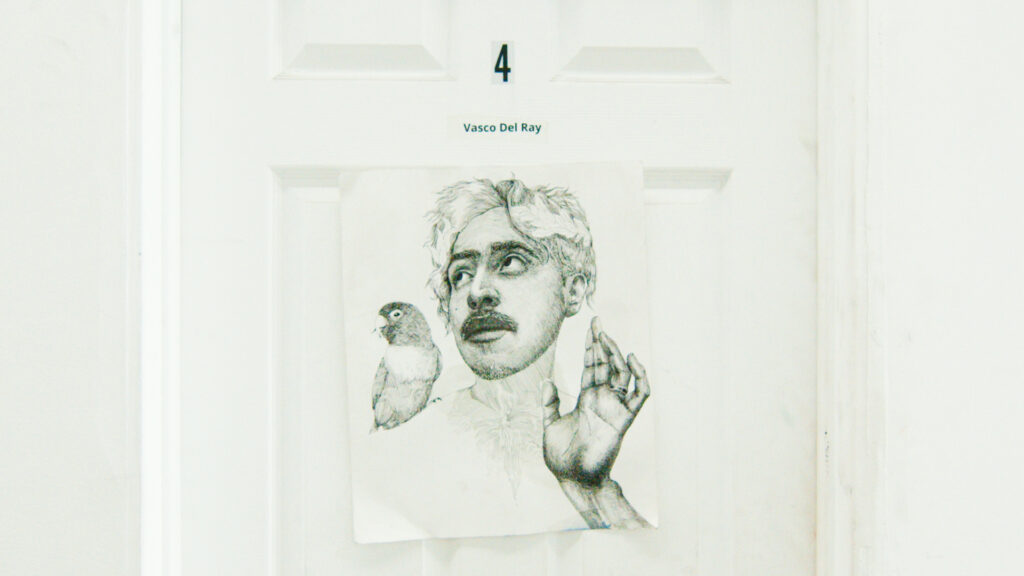
From a six-year-old with a bright green sketchbook to a painter documenting memory. Vasco’s journey embodies the power of persistence, reflection, and creativity. “If I could go back 10 years, I would probably say: You were right. You have what it takes,” he reflects. His work is an ongoing dialogue with the past, present, and future. A testament to the ability for art to transform. As well as, elevate, and immortalize the human experience. Through myth, memory, and the act of painting, Vasco invites viewers into a world that is profoundly shared. A world where the ordinary becomes extraordinary, and where the stories of today resonate far into tomorrow.
